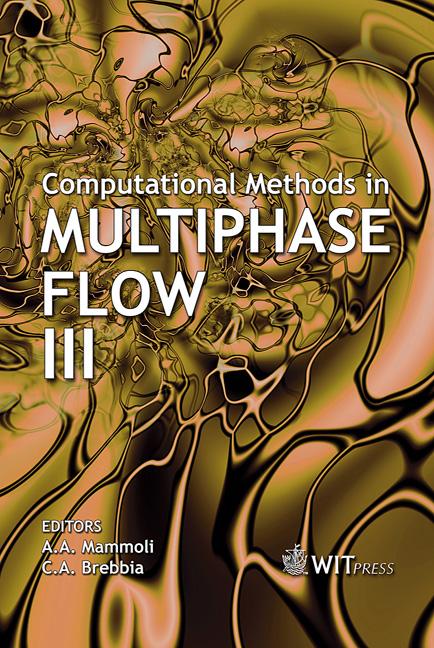Phase-field Simulation Of Two-phase Micro-flows In A Hele-Shaw Cell
Price
Free (open access)
Transaction
Volume
50
Pages
11
Published
2005
Size
549 kb
Paper DOI
10.2495/MPF050141
Copyright
WIT Press
Author(s)
Y. Sun & C. Beckermann
Abstract
A two-phase diffuse interface model previously developed by the authors is used to simulate the buoyancy-driven flow and Rayleigh-Taylor instability of fluid layers inside a Hele-Shaw cell. The model assumes that the two phases coexist inside the diffuse interface with different properties and velocities. A separate momentum equation is used to calculate the slip velocity between the two phases within the diffuse interface. This two-phase approach is coupled with a phase-field equation for calculating the interface motion. The model is validated by comparing the calculated interface evolution, before any topology changes occur, to available results from a sharp interface model. Then, the flows and interface topology changes are investigated for fluid layers with a large density and viscosity contrasts. The convergence of the results with respect to the interface width is examined in detail. It is shown that the two-phase model converges better than standard diffuse interface models that assume a single velocity inside the diffuse interface. 1 Introduction Two-phase flows featuring topology transitions and other interface singularities have become an area of increasing research interest over the last decade [1-3]. In such flows, multiple length and time scales emerge and capillary stresses cannot be neglected. For the nano-scale phenomena introduced by interface singularities, conventional sharp interface models fail to work. Diffuse interface approaches have been proposed to overcome these difficulties [1, 4, 5]. In diffuse interface models, the interface is viewed as a region of finite extent over which the properties vary smoothly from one phase to the other.
Keywords





